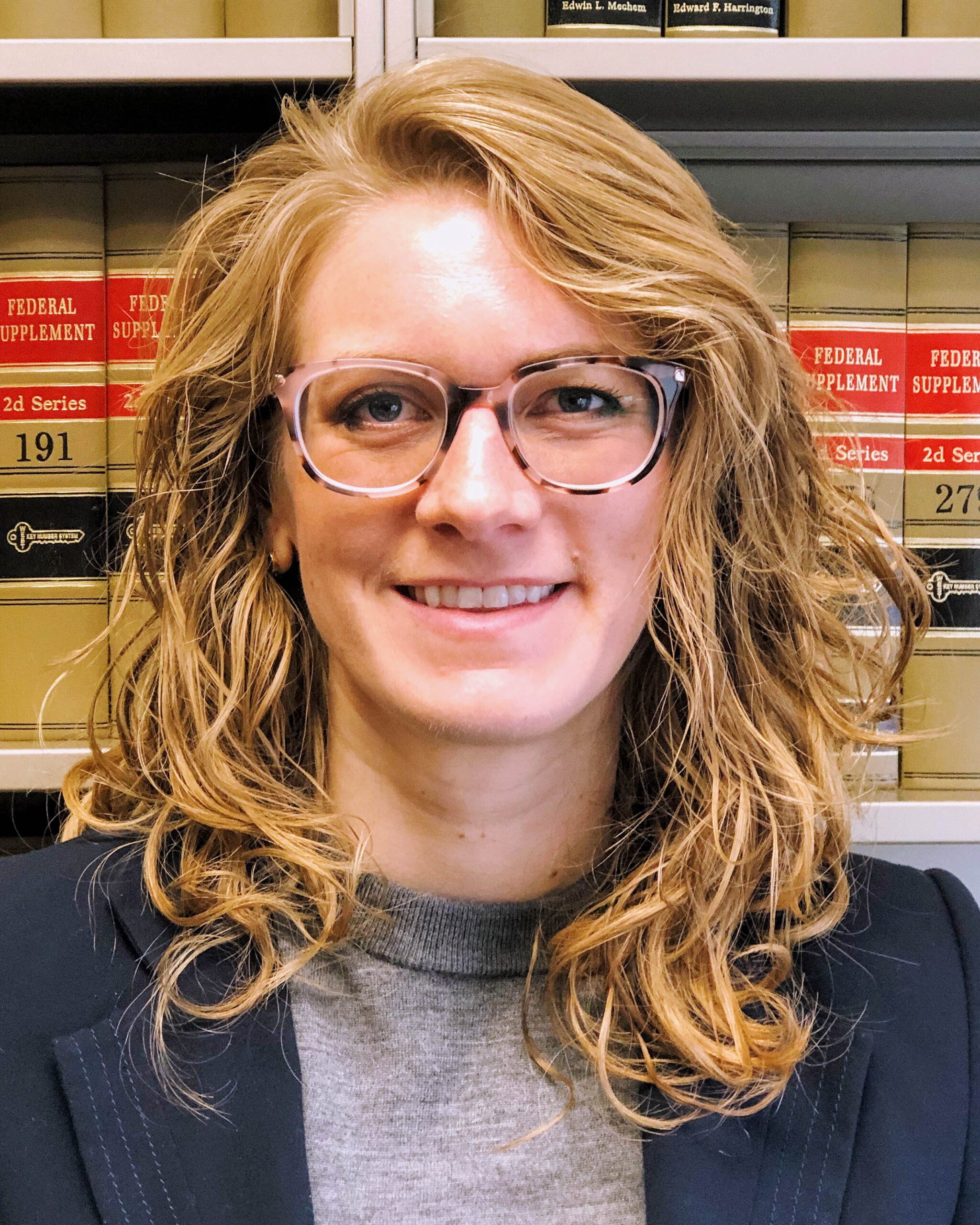The following post from the HLS Office of Clinical and Pro Bono Programs (OCP) blog is one of a regular series of student accounts of their experiences working with Clinics and Student Practice Organizations (SPOs) at Harvard Law School. During the 2019 Spring Term, students gained hands-on experience addressing the legal needs in communities across throughout the country.
Here, Alyssa Bernstein ’19 recounts her experience working for the Office of the Federal Public Defender for the District of Columbia.
“There should be a copy of the Guidelines in your office,” my supervisor at the Assistant Federal Public Defender told me. There wasn’t a copy of the Federal Sentencing Guidelines in my office. If there had been, it would have been hard to miss. It’s a red tome, published in paperback because it becomes obsolete every few years. The back cover features a giant table with roman numerals indicating an individual’s criminal history level and 43 rows determining months of sentences ranging from 0-6 months to 360 months-life. The 2018 edition comes in at about 600 pages and eight pounds. It makes a satisfying thwack on a desk when you throw it down in vexation. For a first-timer, it can be a bit overwhelming.
It was a week into my semester-long clerkship at the Federal Public Defender for the District of Columbia. Instead of shivering in Cambridge all spring, I’m in the Government Lawyer: Semester in Washington program. There are about a dozen other 2- and 3Ls who don’t mind missing a semester of Wasserstein lectures and non-pizza lunch each year. Instead, we work full-time in government offices across the federal branches.
But being a public defender in the government is not synonymous with representing the government. I’ve drafted numerous motions against the government on a number of issues, including arguing that a pre-schooler’s muffled statements should not be the basis of probable cause for a car search and why spending 90 days transporting someone 250 miles for a mental health evaluation (when a statute permits 10 days) cannot be justified as a “reasonable delay.”
I did eventually delve into those Federal Sentencing Guidelines. My assignment was to analyze how the guideline for illegal possession of a firearm (§ 2K2.1) developed over time. The guideline originally gave nine offense levels in 1987, but today goes as high as 33. Moreover, I found that the length of recommended sentences under the guideline has only increased in its 30 years of existence, with increases added as recently as 2015.
The Sentencing Guidelines are the standards that judges use to decide how long to send people to prison. There is an entire government commission to develop them. There is a smaller NGO dedicated to deciphering and reforming them. The whole set was first developed in 1987, at Congress’ behest. Congress was concerned about two things: wide disparities in sentences meted down on defendants for the exact same crime; and the prevalence of early release for good behavior—a practice that many representatives viewed as too lenient.
“Sentencing is a sobering experience that couldn’t be farther from analyzing cases in class. More than any other experience at law school, this clerkship has shown me how the legislative, executive, and judicial branches can form structures whose course and policies are difficult to re-direct, especially for those with the least access to effective democratic mechanisms. “
The Sentencing Commission confers with the Department of Justice and other agencies before revising guideline ranges. While, technically, public defenders have an opportunity to also provide feedback, my research revealed that the Sentencing Commission has not historically heeded their input, at least for the firearms possession guideline. Instead, the Sentencing Commission seems to always respond to the voices of law enforcement and prosecutors, justifying its changes in the name of “increasing deterrence” and “enabling law enforcement.”
Regardless of my personal positions on gun ownership, I believe that the law should be administered equitably across geographic areas. Prohibited weapon possession is a broad category, however. One of the problems with the prohibited possession laws is that they are disproportionally levied against those who are also subjected to the most intense level of police surveillance and searches—that is, communities of color.
D.C. recently changed its criminal gun policy. In order to obtain harsher penalties and sentences, D.C. now prosecutes gun possession charges in federal court, instead of D.C.’s equivalent to state court. It’s fair to surmise that the change in D.C. policy is intended to protect the people in neighborhoods where gun violence is more prevalent. But the targets for gun possession searches are almost always people of color—in fact, every firearm possession case I’ve worked on has been for a client who is a person of color.
Unfortunately, the very communities that are the most affected by the Sentencing Guidelines have the least influence over their determination. During this clerkship I’ve watched trial attorneys work every day, from meeting a client for the first time to attending their sentencing.
Sentencing is a sobering experience that couldn’t be farther from analyzing cases in class. More than any other experience at law school, this clerkship has shown me how the legislative, executive, and judicial branches can form structures whose course and policies are difficult to re-direct, especially for those with the least access to effective democratic mechanisms. Perhaps my classmates on the Hill who listen and respond to constituent input feel that our government is for and by the people. In the Public Defender’s office, the gap couldn’t be wider.
